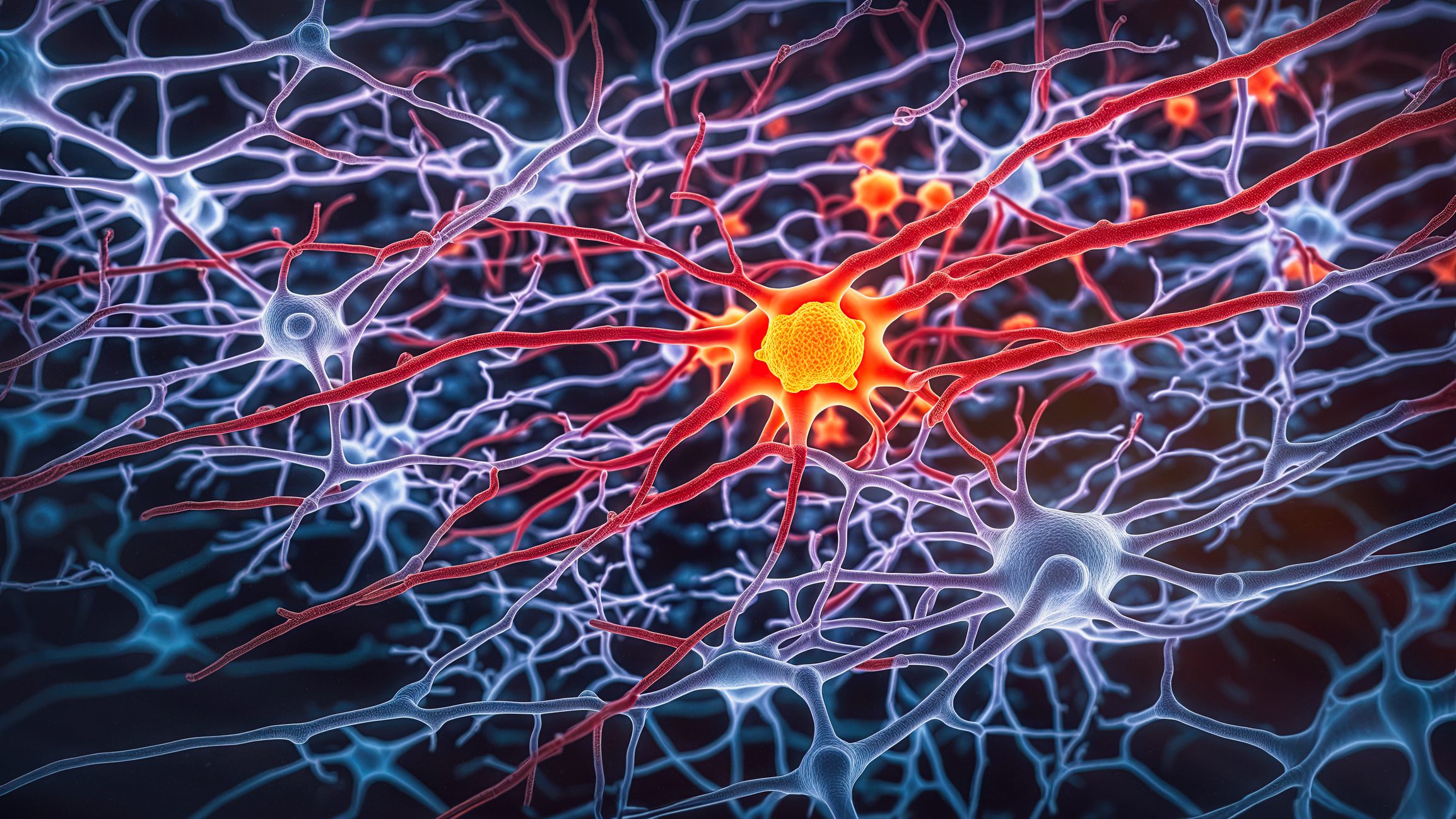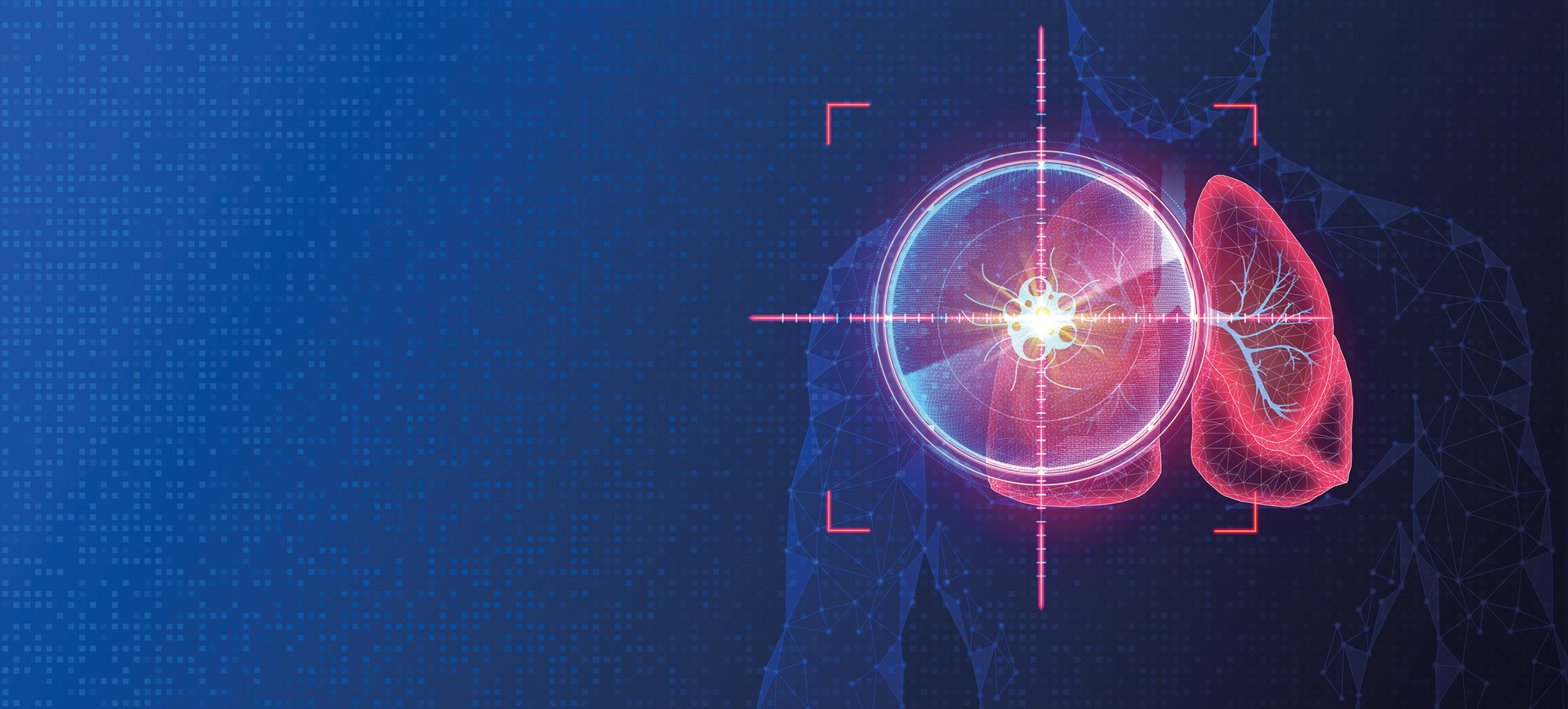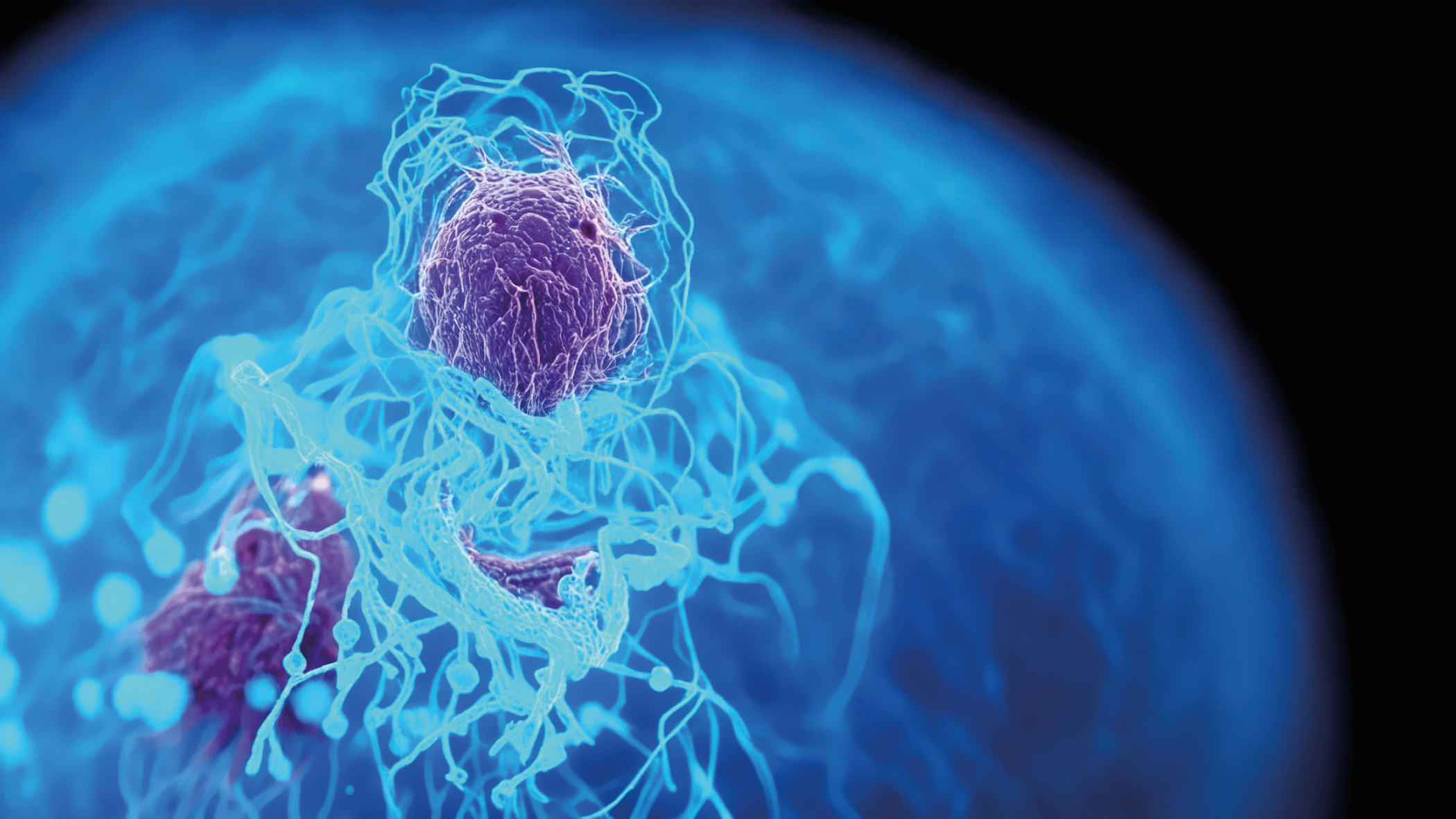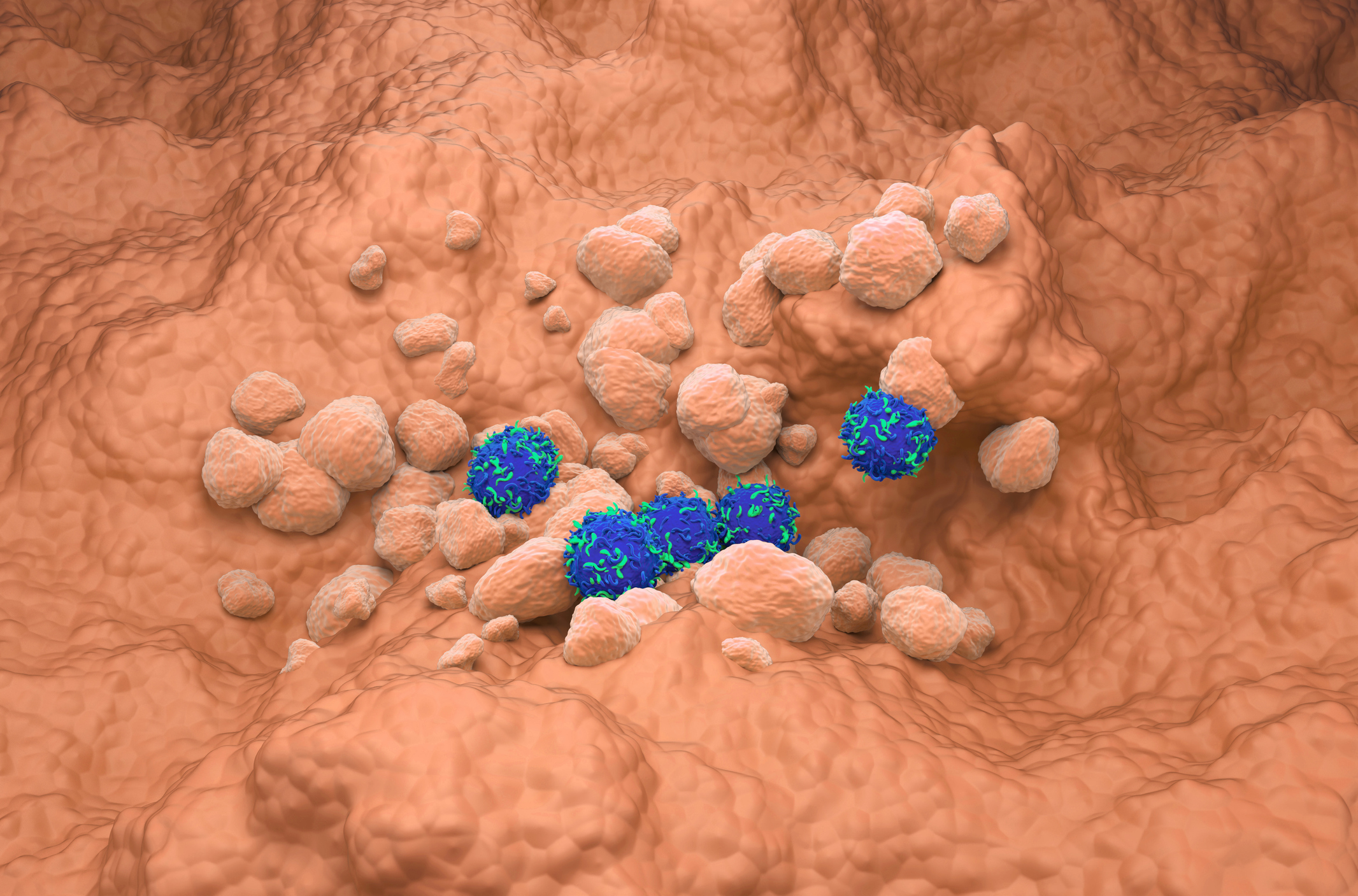Neuro-oncology specializes in the diagnosis and treatment of cancers of the central nervous system. Her main focus is on primary brain tumors such as gliomas or meningiomas, but she also deals with metastases in the central or peripheral nervous system. Scientific research is working tirelessly in the fields of tumor immunology and immunotherapy.
Glioblastoma multiforme (GBM) is the most common tumor of the central nervous system with poor prognosis. Cuproptosis is a novel programmed cell death pathway that targets lipoylated tricarboxylic acid cycle proteins. Previous studies have shown that it is involved in tumor progression, but its role in GBM is not yet clear. One study aimed to develop a risk score for cuproptosis gene signatures using bioinformatics analysis and machine learning [1]. For this purpose, transcriptomic data and clinical information of GBM patients were taken from The Cancer Genome Atlas (TCGA). A total of 2283 differentially expressed genes (DEGs) were sampled from the GEPIA2 database. 26 Cuproptosis-related genes (CRGs) were taken from the literature. A correlation analysis between the 26 CRGs and DEGs was performed to determine the DEGs associated with cuproptosis. Subsequently, univariate Cox analysis was performed to determine the prognostically relevant DEGs for overall survival (OS). Overall, 731 downregulated DEGs were correlated with CRGs, whereas 68 upregulated DEGs were correlated with CRGs and further evaluated for prognostic value using univariate Cox analysis. From these, 70 prognostically relevant CRGs were identified, which were further investigated using LASSO-Cox analysis. According to multivariate Cox analysis, a total of seven genes were significantly associated with survival. Univariate and multivariate Cox regression analyses showed that the prognostic signature based on CRGs functioned as a risk factor for survival of GBM patients. In addition, the results provided a promising understanding of cuproptosis in GBM and a tailored prognostic tool for prognosis and response to immunotherapies in patients.
Early care planning in view
Structured early care planning (SEACP) is far underutilized in cancer but is critical in malignant glioma (MG) because of prognosis, progressive cognitive impairment, and patient autonomy. This was shown by results of a retrospective analysis over a two-year period [2]. This reviewed SEACP documentation and assessed the impact on end-of-life quality measures (EOLQM) compliance and advanced care planning (ACP) documentation. All SEACP visits were conducted by specialist physicians or nurses. 54% were televisits. Topics discussed included: existential concerns (85%), ACP documents (81%), clinical concerns (77%), and patient values (74%). Patients who had completed the SEACP program were more likely than patients in the pre-SEACP cohort to have documented ACP documents (85% vs 44%), to have completed ACP documents themselves rather than through a proxy (81% vs 55.0%), and to be more likely to have been admitted to hospice >7 days before death (89% vs 70.0%). Analysis of the qualitative data revealed that 100% of patients found SEACP helpful in decision making.
The dose makes the poison
Radiation dose (RT) to the hippocampus is known to increase memory loss in patients with brain tumors. Accordingly, avoiding irradiation of the hippocampus reduces the risk of cognitive loss. Because older adults may be more susceptible to RT toxicity, the effects of standard hippocampal dose constraints were compared in older and younger patients to determine the differential effects on cognitive function [3]. Forty-three patients with brain tumors who received partial brain CT were prospectively enrolled. HVLTR was performed before RT and three months after RT. The maximum and mean RT doses to the bilateral hippocampus were calculated. A mean dose to the hippocampus greater than 9 Gy or a maximum dose greater than 16 Gy was considered “high.” Worsening of HVLTR was observed in 27% of patients younger than 65 and in 50% of patients 65 years of age and older. Both age (>65 years) and hippocampal doses above the standard dose were predictive of deterioration. While exceeding the standard hippocampal dose was predictive of cognitive toxicity in younger adults, it was not in older adults. Almost twice as many older as younger adults developed cognitive toxicity after RT, despite lower RT doses in the hippocampus.
Seizure prophylaxis in brain tumors
Many physicians continue to prescribe prophylactic anti-seizure medications (ASM) to seizure-free brain tumor patients, even though treatment guidelines advise against it. In a retrospective observational study, electronic medical records were used to identify patients with a brain tumor diagnosis and no evidence of a seizure diagnosis [4]. Patients prescribed prophylactic ASM were compared 1:1 by age, sex, race, ethnicity, tumor types, comorbidities, prescribed medications, and procedures with those who did not receive ASM. Prophylactic ASM use was defined as the prescription of ≥1 ASM starting 30 days before the first brain tumor diagnosis and up to 30 days thereafter. Risk ratios for seizure occurrence and mortality were assessed using Cox proportional hazards regression models. The date of first brain tumor diagnosis was considered the index date, and patients were followed up for up to 5 years after their first prescription or death. Of the 117 834 seizure-free patients newly diagnosed with a brain tumor, 16.1% were prescribed prophylactic ASM. Of the 14 238 patients in each cohort, 778 of the patients on prophylaxis (5.5%) and 452 of the patients not on prophylaxis (3.0%) developed a seizure during the follow-up period. The risk of death was increased 1.1-fold in those who received prophylactic ASM.
Support diagnosis management
Patients with newly diagnosed primary malignant brain tumors (PMBT) struggle not only with the physical and emotional impact of their cancer, but also with the task of absorbing and processing an overwhelming amount of information about their diagnosis and treatment, often despite significant cognitive and communication deficits. Because there are few resources that address these particular challenges, an effort was made to develop an intervention that addresses the specific educational and support needs of patients with PMBT [5]. For this, patients with recently diagnosed PMBT and their caregivers were interviewed to explore their cancer-related experiences and needs. Common themes included difficulties processing information, communicating with family members and physicians, dealing with uncertainty, and coping with living with a brain tumor. Based on these themes and a previous framework for providing information and support in cancer, the NeuroPathways intervention for patients newly diagnosed with PMBT was developed. This consists of a comprehensive but accessible information guide that includes details about diagnosis, treatment modalities, practical aspects of living with a PMBT, coping strategies, and techniques for managing cognitive and communication challenges, as well as four one-on-one coaching sessions with a behavioral health clinician designed to help each patient develop an individualized learning and coping plan. The feasibility and acceptability of NeuroPathways will be investigated in an upcoming pilot study and a subsequent randomized controlled trial.
Risk factors for stroke after radiotherapy
Strokes can complicate the management of patients with primary brain tumors due to several potential mechanisms, including chemotherapy- and radiation-induced toxicity and disease-specific etiologies. Little is known about the prevalence and risk factors of stroke in this population. One study involved a retrospective cohort of patients with primary brain tumors who also received radiation therapy, from a single academic tertiary brain tumor center [6]. In this study, the prevalence and types of strokes after brain tumor diagnosis were highlighted in more detail, and risk factors were compared in patients with and without stroke.
443 patients with primary brain tumors who had received radiotherapy were identified. Sixty-three patients (14.2%) suffered a stroke during treatment, of which 40 were ischemic (63.5%) and 23 were hemorrhagic (36.5%). Patients who experienced stroke were more likely to have hyperlipidemia (66.7% vs. 30.6%), diabetes mellitus (17.5% vs. 8.4%), hypertension (57.6% vs. 49.6%), and obstructive sleep apnea (9.5% vs. 4.7%). Of the patients with stroke, 65.1% were taking bevacizumab at the time of stroke. Of the 62 patients with strokes, 82% had strokes on the same side as radiation and 53% had strokes at the same site as radiation.
Smoking harms health
Cigarette smoking may contribute to cancer-related genomic instability with increased tumor mutation burden and frequency of KRAS, TP53, and other mutations. Few studies have examined smoking-associated genomic instability in patients with primary gliomas. Therefore, a retrospective analysis was performed in adult patients diagnosed with malignant glioma (i.e., astrocytoma, oligodendroglioma, glioblastoma; WHO grades 2-4) [7]. Data were queried by demographic, clinical, molecular, and treatment characteristics. Smoking status was defined as active/formerly smoked or never smoked. 291 patients were identified; mean age 59+15 years; 54% male; 158 GBM, 64 astrocytomas (28 LGA, 36 AA), 48 oligodendrogliomas (39 LGO, 10 AO), 20 other gliomas. Of these, 58% were never smokers and 42% were current/former smokers with an average smoking duration of 7.1+12 years. The most frequently altered genes were pTERT (69%), CDKN2A (41%), TP53 (45%), CDKN2B (38%), EGFR (33%), IDH (31.0%); mutation profiles did not differ by smoking status for all gliomas. In patients with astrocytoma, 73% of smokers and 42% of nonsmokers had a TP53 mutation; 7% of smokers and 42% of nonsmokers had EGFR amplification. Median survival was shorter in smokers (46 vs. 141 months) and the risk of death was 42% higher.
Congress: 75th Annual Meeting of the American Academy of Neurology (AAN)
Literature:
- Al Majali G, Ahmed Y, Kjalefa Z, et al.: Identification of the cuproptosis-related gene signature associated with the tumor environment and prognosis of patients with glioblastoma multiforme (GBM). Poster S17.003.
- Pescatello M, Mohile N, Serventi J, et al.: Structured Early Advanced Care Planning Outcomes for Patients with High Grade Glioma. Poster S17.006.
- Hardy S, Holley K, Hemminger L, et al.: The impact of hippocampal radiation dose on cognitive outcomes in older vs younger adults with brain tumors. Poster S17.007.
- Jang SR, Peters K, Ngo S, et al.: Prophylactic Anti-Seizure Medication Use in Newly Diagnosed Brain Tumor Patients. Poster P3.002.
- Strander S, Podgurski A, Psenka R, et al.: NeuroPathways: A Novel, Population-Specific Information and Support Intervention for Patients with Newly Diagnosed Primary Malignant Brain Tumors. Poster P3.003.
- Ryan D, Sugita M, Lipp E, et al.: Strokes in Patients with Primary Brain Tumors After Radiation Therapy: A Retrospective Cohort Study. Poster P3.006.
- Bognet G, Ahr S, Ramkissoon S, et al.: Investigating the Molecular Epidemiology and Prognosis of Smoking and Gliomas. Poster P7.005.
InFo NEUROLOGIE & PSYCHIATRIE 2023; 21(3): 34–35
InFo ONKOLOGIE & HÄMATOLOGIE 2023; 11(3): 34–35












